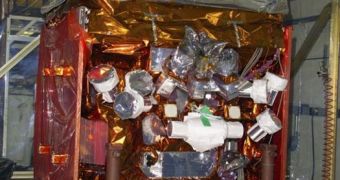According to new data collected by the astronomers operating the NASA Fermi Gamma-ray Space Telescope, it would appear that the spike in cosmic antimatter particle concentrations the Italian spacecraft PAMELA intercepted in 2008 cannot be interpreted as proof of dark matter.
The research bodes both well and bad for the Italian team. On one hand, the data confirm the readings their satellite made, indicating that indeed a spike of antimatter particles can be detected in the Universe. However, the same data put a massive dent in the theory they used to explain the spike.
For years, some scientists have been arguing that a connection must exist between antimatter and dark matter. A common theory is that antimatter somehow shifted into dark matter in the early Universe, when baryonic matter won the fight against its exact opposite.
Baryonic matter is the normal stuff everything is made up of, including stars, planets, black holes, galaxies, superclusters and so on. However, equal amounts of baryonic matter and antimatter were created during the Big Bang, and they should have annihilated each other.
That obviously did not happen, since normal matter won the struggle. One possible explanation for why this happened could be that antimatter somehow turned into dark matter, which now interacts with baryons only through gravitational pull.
What PAMELA observed, and Fermi confirmed recently, was a spike in the number of positrons spread out throughout the Universe. Positrons are positively-charged electrons, their antimatter equivalent.
This is important because the Italian team interpreted these positrons as being the product of a collision between two dark matter particles. Such an interaction should theoretically produce an electron and a positron. By studying the positron's energy, it could be possible to study the original particles' mass.
Finding out how heavy dark matter particles are is extremely important for particle physics. Efforts conducted in order to clear this mystery have thus far failed, despite investigators' best intentions.
The Fermi interpretation of the data is that the presence of the highly-energetic positrons in the Universe is indicative of a broad trend in cosmic ray spectrum. In other words, there may exist positrons so energetic that not even Fermi can detect them all.
At this point, the scientific community is hopeful that the Alpha Magnetic Spectrometer (AMS) instrument which was delivered to the International Space Station this May could chip in in this research, ScienceNow reports.

 14 DAY TRIAL //
14 DAY TRIAL //